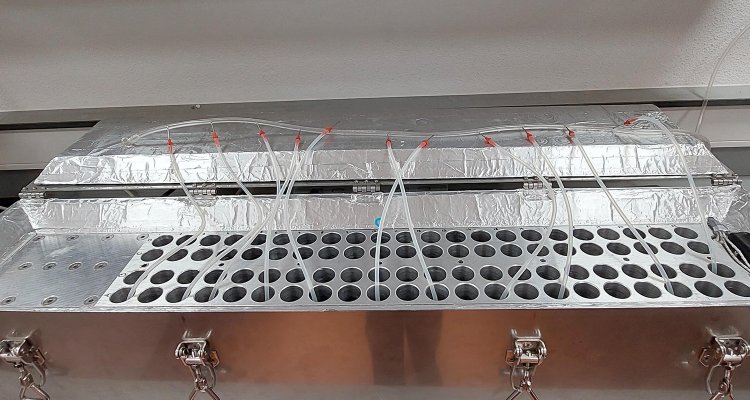
Project
Integrating biological and chemical soil processes towards predicting the climate-carbon feedback
Soils can remove carbon from the atmosphere by storing it in organic matter. Soil organic matter (SOM) is very complex because it is composed of microbial and plant residues that interact with other soil components, such as minerals. Another characteristic of SOM is that it is sensitive to global warming. Higher temperatures accelerate SOM decomposition, releasing carbon back into the atmosphere. However, how much carbon will be lost from soils due to global warming is difficult to predict. This project aims to quantify how the abiotic and biotic steps of decomposition will respond to temperature and affect soil carbon storage capacity.
Background
Soils represent the largest terrestrial organic carbon stock, storing nearly two times as much carbon (C) as the atmosphere in the top one meter. Under the influence of climate warming, SOM decomposition may be stimulated, accelerating the release of carbon dioxide to the atmosphere, thus further enhancing temperature. Numerous studies have suggested that this will lead to a positive feedback mechanism, as higher temperatures are expected to accelerate soil C losses through SOM decomposition more than soil C inputs though enhanced photosynthesis. Yet, the temperature response of SOM decomposition is still widely debated.
Biotic and abiotic processes regulating SOM decomposition rates are significantly affected by temperature changes. This is known as temperature sensitivity. The temperature sensitivity of abiotic processes can generally be described by the Arrhenius theory. In contrast, the temperature sensitivity of biotic processes is better explained by the macro-molecular rate theory (MMRT). Yet, a universal equation that accounts for both types of processes is still missing from models predicting the effect of climate warming on soil organic carbon.
Description
This project aims to develop, calibrate, and validate a new equation that combines the Arrhenius and MMRT theories to account for the dual biological and chemical nature of SOM decomposition. We will conduct a series of laboratory incubations along with modelling work. First, using a European database we identified a large range of samples with varying ratios of particulate organic matter (POM) to mineral-associated organic matter (MAOM). Second, we will use the Rock-Eval (RE) technique on these samples to translate POM and MAOM proportions into quantifiable thermal and compositional indicators related to their position on an abiotic-biotic gradient. We will characterise the temperature response of these samples in a laboratory incubation experiment. Further, we will use a variety of cost minimisation fitting routines to estimate the relative weights of the Arrhenius and MMRT equations as a function of the abiotic-biotic gradient. Finally, we will apply the new equation to characterise how mineralogical composition and microbial communities contribute to explaining variations in the temperature response of SOM decomposition on large spatial and temporal scales.
Results
Preliminary results provide insights on the contributions of POM and MAOM to defining the temperature response of SOM decomposition, and lay the ground for an integration of biological and chemical processes in models predicting the soil carbon- climate feedback.